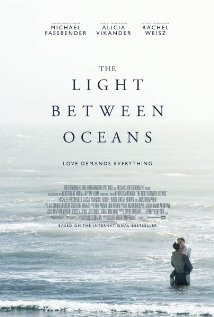 In the summer of 2011, I had a brief gig with a gigantic movie database, tagging films with certain key words. Under the ‘Plot’ category was my favorite tag: “Hide the Body!” It brings to mind movies like “Very Bad Things,” “I Know What You Did Last Summer,” and “Shallow Grave,” films where someone dies under gruesome or mysterious circumstances, and the remaining characters keep the death a secret because it benefits them somehow. “The Light Between Oceans,” a period piece set off the western coast of Australia, is a Hide the Body movie. Gotta say, didn’t see that coming.
In the summer of 2011, I had a brief gig with a gigantic movie database, tagging films with certain key words. Under the ‘Plot’ category was my favorite tag: “Hide the Body!” It brings to mind movies like “Very Bad Things,” “I Know What You Did Last Summer,” and “Shallow Grave,” films where someone dies under gruesome or mysterious circumstances, and the remaining characters keep the death a secret because it benefits them somehow. “The Light Between Oceans,” a period piece set off the western coast of Australia, is a Hide the Body movie. Gotta say, didn’t see that coming.
This aspect of the plot wreaks havoc on the rest of the story, too. Try as they might to make a tasteful art film about love and betrayal – and for a few stretches, they succeed – the thriller angle of the story disrupts the tone once it comes to the forefront. There is clearly a lot going on between the ears of the main characters – grief has many layers – but very little of it is translated on screen for the viewer.
After serving his country in The Great War, Tom Sherbourne (Michael Fassbender) enlists to man a lighthouse on an island off the western Australian coast. Before he leaves for the island, he meets cute with Isabel Graysmark (Alicia Vikander). When Tom receives an extended contract to stay on the island, he asks Isabel to marry him, so she can be with him on the island. The two try to start a family, but Isabel’s first two pregnancies end in miscarriage. Days after the second miscarriage, a dinghy washes ashore, and inside it are a dead man and a live newborn baby. Isabel convinces Tom not to report the encounter, they bury the dead man, and claim the newfound baby as their own.
Later, when Tom and Isabel bring baby Lucy to the mainland to have her baptized, Tom witnesses a young woman (Rachel Weisz) visiting a grave, and discovers that the mother of their baby girl is very much alive. Tom, uneasy with the idea of stealth-adopting someone else’s child from the beginning, is wracked with guilt over what they’ve done, while Isabel is damned if she’s going to give up ‘her daughter.’
This is the kind of subject matter that books were made for. It’s a case study of a woman stranded on an island 100 miles away from civilization, in a time before modern science, dealing with the potential psychological effects of discovering she’s infertile, and how that might rewire her brain in a monstrous way when a baby washes ashore. On the side, it provides some social commentary about the difficulties of marrying someone from the country that Australia just fought in the largest war the world had ever known up to that point (prejudice alert!). That is fascinating stuff, but writer/director Derek Cianfrance (“Blue Valentine”) has trouble getting to the second layer of any of his characters. Most of Tom and Isabel’s conversations regarding Lucy are about actions and consequences, while they rarely, if ever, discuss their feelings. We know that she’s broken, but not in what way. We know that he’s having a crisis of conscience, but not what, with the possible exception of simple human decency, is fueling it. Those details are important.
What the film has going in its favor are several technical aspects of the film. It seems a lock come Academy Awards season for cinematography and score, as the scenery is dazzling and Alexandre Desplat’s score is equal parts haunting and gorgeous, often at the same time. Fassbender and Vikander are world-class actors who take an underdeveloped script and make it watchable, if not the weepfest that it’s shooting for. (They also don’t bother trying to sound like they’re from Australia.) Weisz offers some solid support as Lucy’s birth mother, but the best performances here, no joke, are by the little girls who play Lucy at 12 months and 4 years (Florence Clery for the latter, and two sets of twins for the former). Whichever 12-month-old was on screen during the scene at the dinner table is the best movie baby ever.
When “The Light Between Oceans” is wrapping up – and give it credit, the story is resolved exactly as it should – you get the sense that even Cianfrance and the studio know that they didn’t get things quite right, because they rush through two scenes with enormous emotional weight, presumably to keep the movie’s run time (132 minutes) under control. From a ‘glass half-full’ perspective, one could say that the movie is consistent with how it handles the heavy stuff, but that’s really just a kind way of saying that the film chose to ignore the heavy stuff altogether.
 (3 / 5)
(3 / 5)
This review originally ran September 1, 2016 on Bullz-Eye.com.



